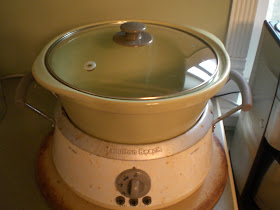My lettuce and greens are starting to come up in the backyard. A nice reminder that spring and the opening of our farmers’ markets are just around the corner. Due to the recently passed Arkansas Cottage Food law, we may find a few more “value-added” products at the markets this year.
What are “value-added” products? For farmers, this usually means a product that they grew and then took it to a kitchen and made it into something more valuable. Like blackberry jam or pickles. Not only can a farmer get additional money for such a product, but he/she can also “save” extra unsold products this way. For example, unsold blackberries could be made into jam or jelly that can be sold later, even during the winter, and unsold cucumbers can be pickled instead of going to the compost pile or to the chickens and pigs.
Previously all value-added products were required to be processed (baked, canned, etc.) in an inspected kitchen. The new regulations now allow for some products, like baked goods, jams and jellies, which are considered to be “low risk” to be made in a home kitchen.
Farmers are still required by the health department to use an inspected kitchen for canned products such as pickles. As you can imagine, this creates a bit of a logistics problem for many small farmers. A kitchen used for your family in your home can’t become an inspected kitchen. Not many small farmers have the funds to build an extra kitchen. This means that a place with an inspected kitchen, like a restaurant or church, has to be found which is willing to rent or loan it to you (when they aren’t using it). Of course, by the time you get all that arranged your left over cucumbers from Saturday’s market have rotted.
Kelly Carney of North Pulaski Farms tells me that as a fruit producer he is glad for the new regulations, but is hoping that a second phase will be implemented next year that will apply to his pickling cucumbers.
If you are a baker or jam and jelly maker, you might be wondering if this new law only applies to farmers. The answer is “no.” Not only can the farmers sell food made in their own kitchens, but now you and I can earn a little extra money with baked goods or jellies from our kitchens too. If you would like to start a cottage food industry, I suggest you read the law and check into it a bit for yourself. There are some labeling and other requirements that you will need to know to proceed. Here’s a copy of the new law.
I believe this is an encouraging step forward for real local food. I asked a representative of the Department of Agriculture this weekend if this means that my children can now legally bake and sell goods for fundraisers rather than selling candy bars. He said that he hadn’t thought about that, but he didn’t see why they couldn’t. Wouldn’t it be great to see our kids selling real food for a change?
What are “value-added” products? For farmers, this usually means a product that they grew and then took it to a kitchen and made it into something more valuable. Like blackberry jam or pickles. Not only can a farmer get additional money for such a product, but he/she can also “save” extra unsold products this way. For example, unsold blackberries could be made into jam or jelly that can be sold later, even during the winter, and unsold cucumbers can be pickled instead of going to the compost pile or to the chickens and pigs.
Previously all value-added products were required to be processed (baked, canned, etc.) in an inspected kitchen. The new regulations now allow for some products, like baked goods, jams and jellies, which are considered to be “low risk” to be made in a home kitchen.
Farmers are still required by the health department to use an inspected kitchen for canned products such as pickles. As you can imagine, this creates a bit of a logistics problem for many small farmers. A kitchen used for your family in your home can’t become an inspected kitchen. Not many small farmers have the funds to build an extra kitchen. This means that a place with an inspected kitchen, like a restaurant or church, has to be found which is willing to rent or loan it to you (when they aren’t using it). Of course, by the time you get all that arranged your left over cucumbers from Saturday’s market have rotted.
Kelly Carney of North Pulaski Farms tells me that as a fruit producer he is glad for the new regulations, but is hoping that a second phase will be implemented next year that will apply to his pickling cucumbers.
If you are a baker or jam and jelly maker, you might be wondering if this new law only applies to farmers. The answer is “no.” Not only can the farmers sell food made in their own kitchens, but now you and I can earn a little extra money with baked goods or jellies from our kitchens too. If you would like to start a cottage food industry, I suggest you read the law and check into it a bit for yourself. There are some labeling and other requirements that you will need to know to proceed. Here’s a copy of the new law.
I believe this is an encouraging step forward for real local food. I asked a representative of the Department of Agriculture this weekend if this means that my children can now legally bake and sell goods for fundraisers rather than selling candy bars. He said that he hadn’t thought about that, but he didn’t see why they couldn’t. Wouldn’t it be great to see our kids selling real food for a change?
Lisa









